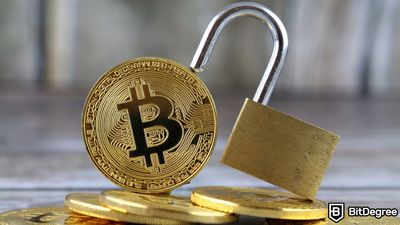Stop overpaying - start transferring money with Ogvio. Sign up, invite friends & grab Rewards now! 🎁
Asset security is a big concern for everyone. Whether it be physical assets, or those of the digital kind, this remains true, nonetheless. This, in turn, raises a rather hard question to answer - what is the most secure vault in the world to safe-keep your assets in?
The reason why this question is so hard to answer is because it revolves around secrecy. Some of the best vaults keep their security measures away from the prying eyes of the general public. Thus, we aren't really sure just what measures these vaults employ!
One thing that we CAN be sure about, though, is the reliability of the wallets to store your cryptocurrencies in. These hardware devices act as the most secure vaults for digital assets, but more on them later.

Did you know?
Subscribe - We publish new crypto explainer videos every week!
Crypto Day Trading VS Swapping: What’s More Rewarding? (Animated)


Table of Contents
- 1. What is the Most Secure Vault in the World?
- 2. Bank Vaults: Multilayered Security Features
- 2.1. The Most Common Features of Any Vault
- 2.2. The Vault of the Bank of Spain
- 2.3. New York Federal Reserve Vault
- 2.4. The US Bullion Depository, a.k.a. Fort Knox
- 2.5. Svalbard Global Seed Vault
- 2.6. Bahnhof and WikiLeaks in Stockholm
- 3. What About Virtual Vaults for Virtual Assets?
- 3.1. What are Virtual Assets?
- 4. The Wild, Wild West of Cyber Security
- 5. Methods Used to Keep Your Virtual Assets Safe
- 6. Cryptocurrency Wallets
- 7. Conclusions
What is the Most Secure Vault in the World?
Very little is known about the places competing for the most secure vault in the world title. The secrets of these places are hidden well and deep.
Latest Ledger Flex Coupon Found:Even more curious is what might be hiding behind those massive doors and thick walls. Is it gold? Is there hidden treasure found ages ago that the government confiscated? What are the things the governments want to hide away?
It also does not help that there are new types of criminals out there looking for assets of a different kind - specifically, digital assets. While physical assets need physical vaults, digital assets need digital wallets, and with that comes a whole new variation of asset protection.
From the Bank of Spain vault, to the unparalleled Fort Knox, to the Bahnolf vault, let’s look at a few of the most popular and the most secure vaults in the world, as well as some of the more-unique modern ways of protecting assets, ranging from gold bars to virtual assets.
Bank Vaults: Multilayered Security Features
Before we dive into the most fascinating and famous bank vaults (and discuss hardware platforms such as Ledger and Trezor) let’s unpack what it is and how they are more than old-fashioned lock and tumbler doors that bank robbers could blow up or crack by turning a knob and listening to the clicks through the door.
Most of us are familiar with a variety of safes ranging from small home lockboxes meant to protect family jewels and valuable papers, to large standing units or safes built into walls as seen in movies.
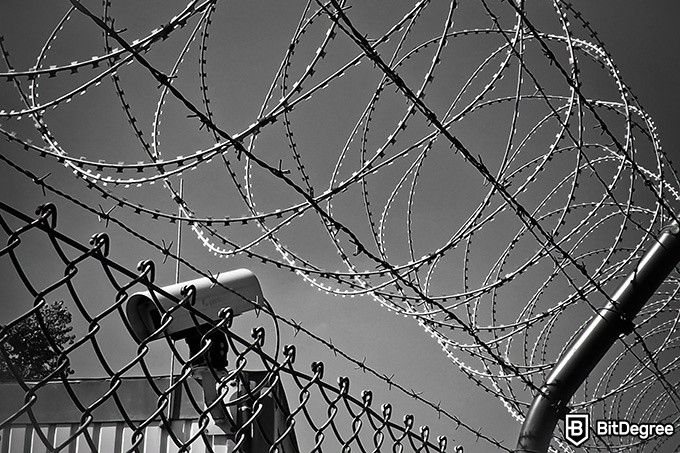
But if we want to build the most secure vault in the world, we must understand that it requires an impressive feat of innovation and genius. The final result will be a combination of bold and bulky fortresses with the sleek sophistication of advanced technology.
Historically, most vaults were hidden deep in the caverns of the bank, usually the basement. The most secure vaults in the world are way more than a simple addition to a building; they are an integral part of the bank’s structure.
These bank vaults are built with security in mind, inside and out.
The Most Common Features of Any Vault
Some of the key features we would need if we decide to build a competitor for the most secure vault in the world title:
- Reinforced doors or a series of doors: the more physical barriers and codes required, the more it makes the entry extra-complicated and cumbersome for would-be thieves.
- Thick walls reinforced with concrete and steel: the combination of steel and concrete makes alternate access to vaults nearly impossible, and also protects the vault from natural disasters like earthquakes.
- Basement level or underground: makes it harder to access easily.
- Round doors: reduces leverage from external attacks and increased security with symmetrical rods and bars in the locking mechanism.
- A series of complicated tumblers or codes.
- Closed-circuit cameras: prevent hackers from tapping into and gaining visual access to security measures.
- Armed guards or forces: an added layer of unpredictable security that does not rely on static protection or AI-programmed security that cannot respond as naturally to unexpected events like a break-in.
- Biometrics and advanced technology: using one-of-a-kind metrics like fingerprints and iris scanners ensures that only the right people have access.
- Many more hidden security features unique to the vault: understandably, the most secure vault in the world cannot share all of its secrets publicly!
While talking about the most secure vault in the world, we also must consider the cutting-edge technologies used to protect it.
Biometrics is one of the most trusted forms of technology used for security. One-of-a-kind physical features, like palm prints, fingerprints or irises are the hallmarks of biometric security. These biometrics are extremely hard to artificially reproduce or hack, thus it is a common practice to add it among other selected security measures.
Pressure and motion sensors have been upgraded to near-ideal security levels thanks to modern technology. Usually managed by IoT technologies and with the help of AI, these sensors are precise, exceptionally robust, and incredibly hard to outsmart.
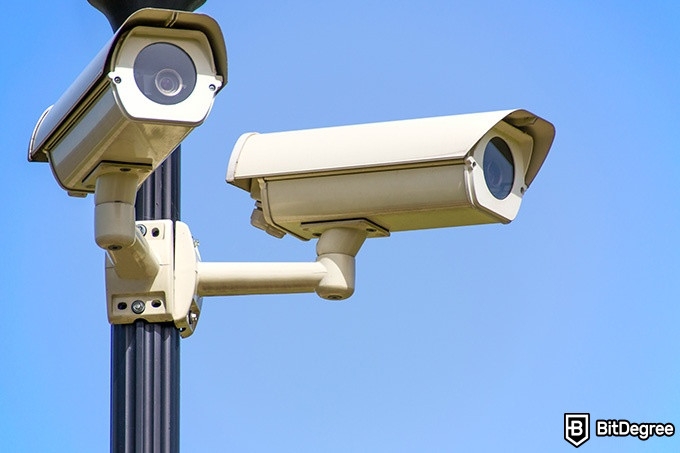
Cameras have long been included in vault security. But modern cameras are powered by AI-machine learning to pick up irregularities, monitor heart rates, and breathing patterns. With facial recognition, security teams can be alerted quickly by persons of interest and trigger system-wide alerts.
These advanced technological masterpieces can be pre-programmed with automatic responses based on high-risk scenarios, rather than depending on human reaction and action. It also removes some of the variables of human error or distraction, as well as complicating potential inside jobs.
It is no wonder that the contestants for the most secure vault in the world title kept the imagination of the creative minds going wild! From real heists and spectaculars attempts to conquer the vaults, to books and movies, it has been and still is an exciting topic to many.
Do I have your interest piqued? Then let’s take a look around the globe at some of the most famous and the most secure vaults in the world, and the brilliance behind their designs.
The Vault of the Bank of Spain
The most famous bank vault in the world right now is the Bank of Spain. From the Money Heist to The Vault on Netflix, fans get a real-life taste of its intricate security and the riches it holds. However, the actual vault security measures are considerably more challenging than either show fully explores.
Famous, in the show and movie, is the fact that the vault floods with water if it's broken into. But more than the threat of a watery grave awaits would-be robbers.
There are three doors on the vault that are so precise that even the smallest piece of fluff could prevent the door from sealing, raising the alarms. To open each of these doors, it takes two of the highest-ranking employees to enter their keys and codes, simultaneously.
To even get to the doors, you would have to navigate a portal leading to a 115-foot elevator shaft down to the drawbridge, secured with another armored gate. Between two doors is a corridor where the first threat of flooding and drowning lies at the watery hands of Madrid’s famous fountain, la Fuente de Cibeles.
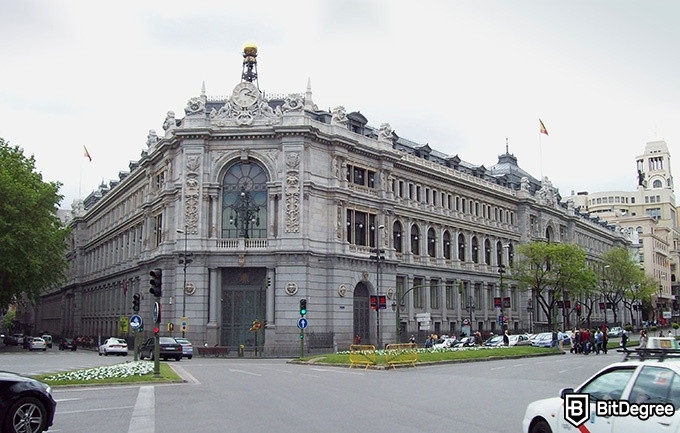
Those are just the known security measures.
Only the highest of bank officials know what modern technology has been added to the Bank of Spain vault since it was constructed in 1930, earning its place as one of the most secure vaults in the world.
The Spanish government claims that it has never been robbed, which definitely makes its claim for the most secure vault in the world title extremely strong.
According to one source, there was a robbery during the Civil War, and the gold was moved to the USSR. Internet folklore suggests the money has yet to be returned. Whether that was really a robbery is really up in the air. It’s a pretty fishy story!
New York Federal Reserve Vault
The New York Federal Reserve Vault, housed at 33 Liberty Street in New York, is said to be the vault that has the most gold in it worldwide. The building takes up a full block of real estate in the financial district of Manhattan. As of 2019, it had an estimated 497,000 gold bars, weighing over 6000 tons.
The vault rests on the actual bedrock of Manhattan Island, as it is over 80 feet below street level and 50 feet below sea level. It takes an elevator to get the gold down to the vault. All gold bars are carefully weighed and put through a rigorous inspection process to ensure the gold is... Well, gold.
The specially-trained inspector checks for specific markers that indicate its purity and production process. Once the gold is verified, it is placed in locked compartments that are locked with a padlock, two combination locks, and an auditor’s seal.

It is interesting that each compartment is numbered, rather than named, for added layers of confidentiality for its patrons. As one of the most secure vaults in the world, it is nice to know that privacy and confidentiality are also protected.
It also takes a specific control group of three people to manage any movement of gold: two members of the gold vault staff, and a New York Fed internal audit staff. And these three people must be present no matter what is happening in the vault - even to change a lightbulb.
How does one get into the vault?
There is a 90-ton steel cylinder that protects the only entry into the vault. The 9-foot bar is contained in a 140-ton concrete and steel frame that creates an airtight and watertight seal. Once the door is shut, four steel rods and time locks engage, preventing the vault from being opened until the next business day.
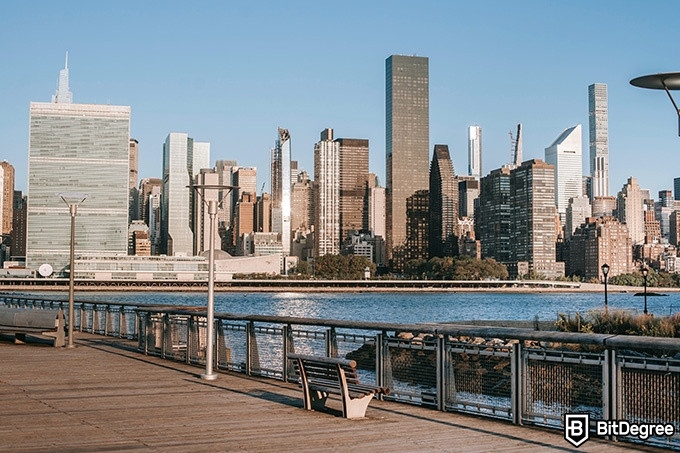
If that massive door and lock system isn’t impressive enough security for you, there is 24-hour surveillance inside and out of the vault, backed up by motion sensors when the vault is closed. The building also has its own security system and is monitored by an armed Federal Reserve police force.
Visitors can tour the Federal Reserve Vault for free. But you are required to have a government-issued ID that matches the printed tickets. And no photography or strollers are allowed; good to know, just in case you wanted to bring the family along for a day trip to one of the most secure vaults in the world.
The US Bullion Depository, a.k.a. Fort Knox
“As secure as Fort Knox” is an age-old American saying, and Fort Knox in Kentucky stands up to the claims. The most famous vault in the world, Fort Knox in many minds *is* the most secure vault in the world because of the legends and mystical aura surrounding it.
No one knows for sure what makes up the legendary Fort Knox security. Still, rumor suggests that the US Bullion Depository is surrounded by landmines buried in the yard, laser-triggered machine guns, and ever-watchful radars used by Predator drones. Not the place we suggest you try to get into to try and discover what is in Fort Knox.
Should you make it past the booby-trapped front lawn, you will find that Fort Knox is surrounded by four fences, two of which are electrified. Security measures also boast of teams of armed guards, and state-of-the-art surveillance cameras.
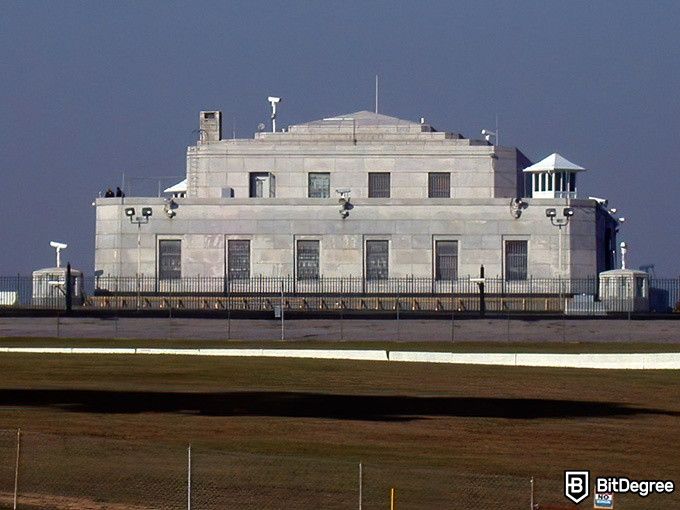
There are also granite walls four feet thick reinforced with over 750 tons of steel. To get to the vault, you would have to navigate through a series of locked doors until you reach the final 22-ton vault door.
But to even make it through the maze of locks and doors and Fort Knox security, you would have to round up a whole crew of staff members, as no one person knows the whole of the security measures. Each person has to dial in their own security passwords and combinations, which are all changed on a daily basis.
The US Bullion Depository is not only protected by all these impressive security measures - Fort Knox is also home to almost 40,000 soldiers and civilian employees and their families. Quite literally a small army protects this place.
So, what is in Fort Knox?

Known as the US Bullion Depository, Fort Knox stores thousands of tons of gold, as well as some of the most important historical documents like the Magna Carta, and it once housed the Declaration of Independence and the Constitution. Not much else is known about what is in Fort Knox, though.
Fort Knox security is so historically impressive, that it has not ever been robbed. Not only that, but according to experts, no one has even attempted to break into the US Bullion Depository since 1935. And that was before modern technology with biometrics and high-tech cameras and sensors.
Though Fort Knox is usually called the most secure vault in the world, it is debatable. Nobody really knows all the protective measures of the Bank of Spain Vault, New York Federal Reserve Vault, and Fort Knox, so there is no way to know for sure which one is truly the most secure vault in the world.

Did you know?
Subscribe - We publish new crypto explainer videos every week!
What is Curve Finance in Crypto? (Animated Explanation)


Svalbard Global Seed Vault
Another contender for the most secure vault in the world title holds more than just gold, money, and nations' most powerful secrets. Known as the “Noah’s Ark of Seeds” or the “doomsday vault,” Svalbard Global Seed Vault in Spitsbergen, Norway, holds the world’s largest collection of seeds.
This Noah’s Ark seed vault is home for over 930,000 seeds that represent 5000 plant species, some of which are the rarest seeds on the globe. The vault keeping this treasure is hidden in an ice mountain on an island just a little south of the North Pole. Not exactly the most leisurely first stop during an apocalypse.
This is probably the world’s least accessible vault to get to. If the location and windchill alone aren’t enough to protect it, polar bears are known to wander the area.
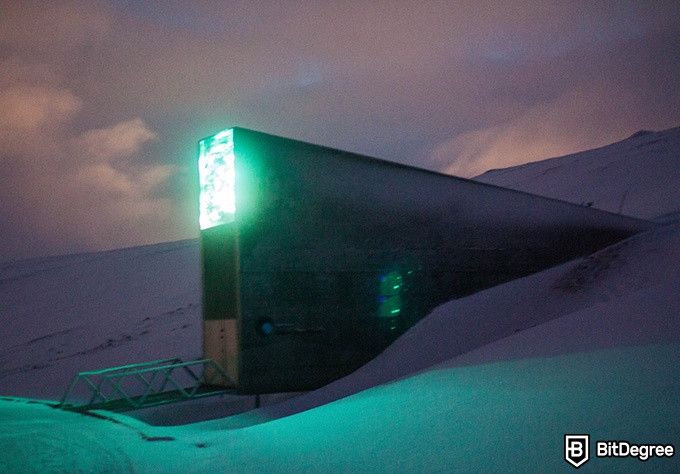
Actually, some people consider polar bears to be a security measure of this vault. So, if during trivia night you hear a question about which vault is guarded by polar bears - Svalbard is your answer.
Though visitors brave enough to make it to the icy mountain island can take pictures of the outside, no one is allowed inside except those with the highest security clearance.
This state-of-the-art seed storage vault is essential to preserving the world’s food supply. The Svalbard Seed Vault has over 140,000 varieties of wheat, 150,000 samples of rice, as well as thousands of samples for other worldwide staples like barley, peas, and potatoes, to name a few.
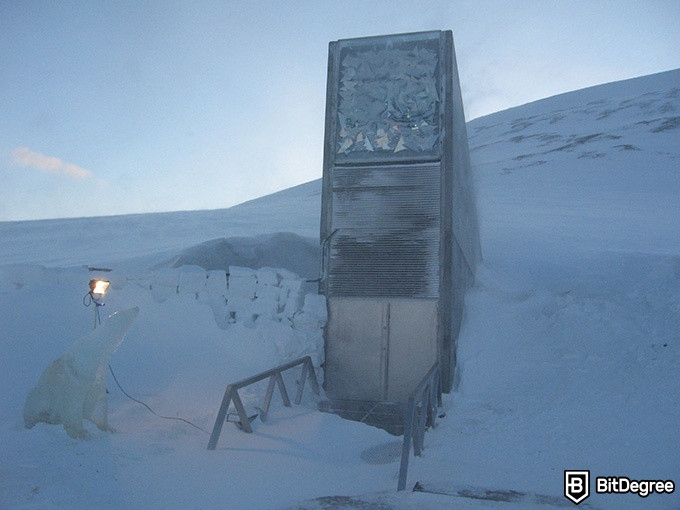
This nuclear-resistant vault is located 620 miles from the North Pole and is covered in layers of permafrost. This makes it an ideal and cost-effective cooling solution, not to mention incredibly solid security protection.
Back in 2017, there was a leak in the vault’s storage. Quite literally a leak, as a passage leading to the vault flooded. Unusual amounts of rain and unusually warm weather were to blame for the breach in security.
The Norwegian government spent almost $4.7 million to waterproof the tunnel, and has committed to an additional $6.3 million for upgrades to protect against climate change, thus making it truly the most secure vault in the world used for non-monetary purposes.
Bahnhof and WikiLeaks in Stockholm
One of the most fascinating vaults does not contain gold or seeds but instead servers. That’s right! The Bahnhof data server in Stockholm is home to WikiLeaks, one of the most notorious places of leaked secrets. A little ironic coming from one of the most secure vaults in the world.
The Bahnhof facility is modeled after the Sci-Fi movies "Silent Running" and "Logan’s Run" to create a one-of-a-kind workplace. But don’t let the waterfalls, jungle plants, lowland smog, and meeting rooms with images of the moon’s surface on the floor trick you into thinking that this facility has anything less than state-of-the-art security.
Blasted into the bedrock and granite of the Pionen White Mountains of Stockholm, this data mega center is hidden away in a cold war nuclear bunker. Concealed by a mountain, the only way in is through a 15-inch thick door at the end of a tunnel. This security makes the center capable of withstanding a hydrogen bomb.
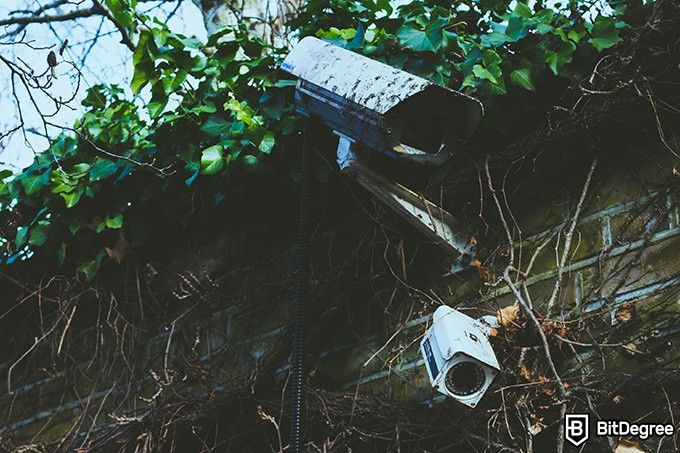
German submarine engines are right at the facility entrance - they will automatically start if power is cut. To top it off, the engines are fitted with submarine sound horns that will go off in the event of a system breakdown. A bit of a rude awakening, should someone try to cut the power.
As a co-hosting site, you could put your own servers in this secure facility, much like what the infamous WikiLeaks has done. Not only is it protected by insane security measures, but the companies hosted under the White Mountain are protected by Sweden’s strong free speech and data protection laws.
Without a doubt, all these measures make Bahnhof the most secure vault in the world for any digital security needs.
What About Virtual Vaults for Virtual Assets?
The most secure vault in the world with Fort Knox security, or a hardly-accessible location like the Seed Bank is excellent if you have gold bars or state secrets to hide. In today’s ever-changing, technology-forward world, though, even currency has changed and adapted to the virtual world.
More than gold, people care about their digital assets. Not only money, but also reputation and corporate secrets can be lost if someone is successful at stealing virtual assets. Vaults like Bahnhof that companies like WikiLeaks depend on is one solution while there is also a lot to know about cybersecurity.

- User-friendly design
- Robust security
- Long battery life

- Dual auditable Secure Element chips
- Quantum-resistant protection
- Water and dust resistant

- Transaction Check feature
- Direct dApps connection
- Great middle-ground price
What are Virtual Assets?
A virtual asset is a digital representation of currency that can be traded or transferred digitally, used for payment purposes, and even invested. The use of cryptocurrencies and blockchain technology, in general, has risen by a huge margin in the last few years!
Virtual assets are quickly becoming a valuable and necessary form of currency in the world today.
First, though, it is important to understand what is considered to be a virtual asset:
- Private data: from medical information to corporate secrets, there is a lot of data online that needs to remain private. Until this day everybody, still remembers how leaked Sony emails revealed some of the most kept Hollywood secrets. The amount of leaks like this proves how important it is to learn about data security.
- Blockchain: a blockchain is a system on which information is recorded, essentially a digital ledger of transactions across a network. Blockchains are nearly impossible to hack, change, or cheat, making them a secure way to have virtual assets. In a way, a blockchain is both - an asset containing information, and a means to protect said information.
- Bitcoin: Bitcoin is the oldest cryptocurrency, and can be exchanged for cash, making it exceptionally versatile... It is a valuable way to send money over the internet, and is considered to be the de facto standard for cryptocurrencies.
- Cryptocurrencies: these days, there are well over 10,000 different cryptocurrencies and crypto tokens on the market. They are digital assets that can be traded on the blockchain.
They are generally issued privately, and used among specific virtual communities. However, there are many crypto trading apps and services out there that make trading between cryptocurrencies easy and seamless.
The Wild, Wild West of Cyber Security
Even though cryptocurrencies are safe from things such as C-4 and bandits, protecting and managing virtual assets can feel a little like the wild, wild west. Criminals can still get to your virtual assets without setting foot in a vault protected with water, like the Bank of Spain vault.
Hackers and ransomware attacks have held thousands of computer systems hostage. The costs of these attacks are in the billions of dollars as banks, hospitals, and businesses worldwide were held hostage in this virtual world. Criminals lurk in the back alleys of the internet and it takes a new level of security to keep up with them.

Another layer of security risk for cryptocurrency is that hackers can convert payments from one virtual asset to another, essentially removing links to the crime. They can then take their virtual assets, cash out their “cleaned” cryptocurrency, and walk away with a cleaned-up trail.
Methods Used to Keep Your Virtual Assets Safe
Unlike gold bars and historical documents tucked away in places like the Bank of Spain vault, virtual assets require more creative methods than steel doors, vaults that can flood, or icy mountains.
No one vault can protect your virtual assets. To keep your virtual assets safe from hackers and cyber attacks you have to be vigilant, informed, and aware of all your options. Naturally, at the top of these options, you'll find hardware cryptocurrency wallets - devices designed specifically to keep your cryptos safe and sound.
There are many different methods you can put into practice that can make your assets as safe as what is in Fort Knox:
- Use hot and cold wallets: do not keep all your assets active online. Keep the large majority of your assets in a cold wallet, offline.
- Spread assets out: add variety to your portfolio and have more than one crypto wallet.
- Know currency regulations.
- Do not use self-custody private keys: if you forget your code, your virtual assets are almost impossible to recover. Protecting your assets can be just as much about keeping them safe from the outside world, as it is from forgetfulness and misplacement.
- Hire specialty vendors to protect assets: there is so much to know about the online world and cryptocurrencies that it is important to use specialists that can help you protect your virtual assets.
Keep in mind, though, that, if you want to keep your digital assets safe, either way, cryptocurrency wallets such as the Ledger Nano X or the Trezor Model T are the way to go.
Cryptocurrency Wallets
Much like a physical vault, digital wallets have layers of security that protect your virtual assets. These rely on codes and combinations, a series of protections that protect your most valuable information. More than just cryptocurrencies, digital wallets and vaults can secure your online life from hackers and thieves.
In the world of crypto wallets, though, the two names that keep popping up are Ledger and Trezor. These are the two major brands in the hardware crypto wallets industry, and are responsible for offering their customers some of the most security-oriented products in the crypto world.
![]()
![]()
Hardware
Hardware
Safely Storing, Sending, and Receiving Different Cryptocurrencies
Easily Controlling Funds and Managing Balance
All Ledger Nano X Coupons
See All Coupons of Best Wallets
The tried and true hardware wallet from Ledger with all the essential features.
One of the most-secure cryptocurrency hardware wallets on the market.
Visit site
Read review
See TOP10 Brands
Read review
Table: Some general information about the Ledger Nano X and Trezor Model T hardware cryptocurrency wallets
Do note, though, that, while you CAN use a digital (hot) wallet to store your cryptos in, this isn't necessarily recommended. If you are able, you should always take the cold wallet alternative - this will ensure much stronger security features!
Conclusions
Though it may seem like there is little connection between the most secure vaults in the world and your digital assets, they have more in common than you may think: protecting what belongs to you.
You most likely do not need a room that floods to protect your virtual assets, nor do you need to trek into the frigid tundra or deep below Manhattan to protect what is yours. Though you most likely do need powerful solutions that will keep your assets just as safe as if they were protected by the famous Fort Knox security.
In the world of crypto, these solutions manifest in the form of hardware wallet products, such as the Ledger Nano X, and the Trezor Model T.
So take time and make sure your virtual assets are as secure and protected as they need to be!
The content published on this website is not aimed to give any kind of financial, investment, trading, or any other form of advice. BitDegree.org does not endorse or suggest you to buy, sell or hold any kind of cryptocurrency. Before making financial investment decisions, do consult your financial advisor.





